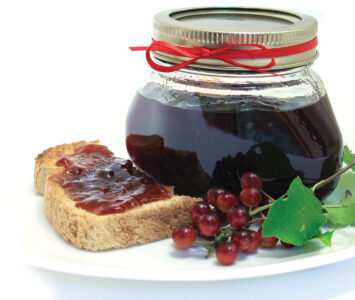Raised beds can make gardening easy for a number of reasons. They warm up faster in the spring, they are easier to weed and maintain, and they give a garden a nice, organized look. Also, the soil does not get compacted because you do not need to walk on the soil around the plants.
Almost any gardening center or home-improvement warehouse-type store carries raised-bed kits or treated lumber that can be used to build raised beds.
However, one way to have the raised beds you want for next to nothing — or free — is to look for free lumber.
This can be found in a number of places. Some of the best wood for raised beds are old fence boards. Search through community buy-and-sell websites for anyone in your area who is rebuilding a fence and is giving away their old fence boards, or someone who is throwing out scrap lumber from a construction project.
A good size for raised beds is about 12 inches high, 2 or 3 feet deep and about 5 or 6 feet long. As old fence boards are generally around 6 inches wide and 5 or 6 feet long, they are ideal for this project.
Materials
For each raised bed, you will need:
- 6 fence boards that measure 6 inches wide and 5-6 feet long. Two of these boards will be cut in half to create four boards that are 3 feet long.
- 4 corner posts that are 18-24 inches long. These can be cut from pieces of 2-by-4 boards or 2-by-2 posts.
- Wood screws that are long enough for the fence boards you are using. If the boards are 1 inch thick, you will need 2-inch wood screws. If you don’t have any wood screws on hand, this will be the only item you will need to buy.
- A power drill
- A circular saw or radial arm saw
- A shovel
- Large cardboard boxes, flattened out. This is optional, but if cardboard is laid in the bottom and under the sides of the raised bed before you fill it with dirt, it will deter weeds and grass from growing up through and around the bed.
Directions
Now to build your raised bed.
1. First, plan out where you want to build your raised beds.
Make note of which area of your yard gets the most sun, and draw up a plan on paper. Map out the fence or boundary of your property, other trees, sheds or shrubs, and where you want your raised beds to go.
Determine how many raised beds you want, and draw them out on your yard “map.”
2. Plan out the size of your raised beds.
Raised beds are easy to work in if they are no wider than two or three feet. This allows you to reach to the center of the bed from either side.
The raised beds can be as long as you need them to be, but make sure you can get around them easily.
3. Build your raised bed frame.
Put the shorter end pieces together first. Lay out two corner posts, 2 feet apart. Lay the first 2-foot length of board on the posts with the top edge aligned with the top of the post. Screw the board to the post, and then add the next piece of 2-foot board under the first one and screw it to the post as well.
Make sure the boards are square with the post. For added stability, use two screws per each end of the board. Repeat this process with the other two corner posts and the remaining 2-foot lengths of board. You will have two end pieces that look like bed headboards with legs.
Now add the side rails. Prop the end pieces on end and brace them securely. Make sure the corner posts are facing the inside of the box.
Line up the 6-foot pieces of board with the end boards and screw the side rails to the corner posts. Make sure they are square and use two screws per each end of the boards.
Repeat this process with the remaining 6-foot boards on the other side by turning the box over to lay on its finished long side.
You will now have a box frame that is 1 foot deep, 2 feet wide and 6 feet long, but is open at the bottom. It will have four legs that are each 1 foot long.
4. Set the raised bed frame in the ground.
Set the frame in the spot where you want it to go. Using a shovel, mark the location of each leg in the ground, and then move the frame out of the way.
Dig a hole for each leg and make sure it is at least 1 foot deep. This is easier to do if your ground is soft, but if it is hard or rocky, you can build the frame with shorter legs so that you don’t have to dig so deep.
When your holes are dug, set the box into place, dropping the legs into the holes. When you are sure the sides all touch the ground, then you know your holes are deep enough.
If you are going to use cardboard to keep the weeds down, lay large pieces of thick cardboard under the sides, around the legs and in the bottom of the raised bed. When the cardboard is in place, and the frame is settled with the legs in the holes, fill in the holes with dirt, tamping it down firmly.
Now your raised bed is ready to fill with good-quality soil for planting. You can also fill in around the raised bed with bark mulch, gravel or straw for a clean and weed-free space around each bed.
Judith Dockenis a freelance writer, author and blogger. She has published gardening articles in SF Gate and Modern Mom online magazines and was published in an anthology of Canadian short stories called That Golden Summer. She is currently building her backyard into an urban homestead and organic garden, writing her second novel, and learning how to grow asparagus and celery Connect with Judith onLinkedIn, Pinterest, and Google+.
All MOTHER EARTH NEWS community bloggers have agreed to follow our Blogging Guidelines, and they are responsible for the accuracy of their posts. To learn more about the author of this post, click on their byline link at the top of the page.









